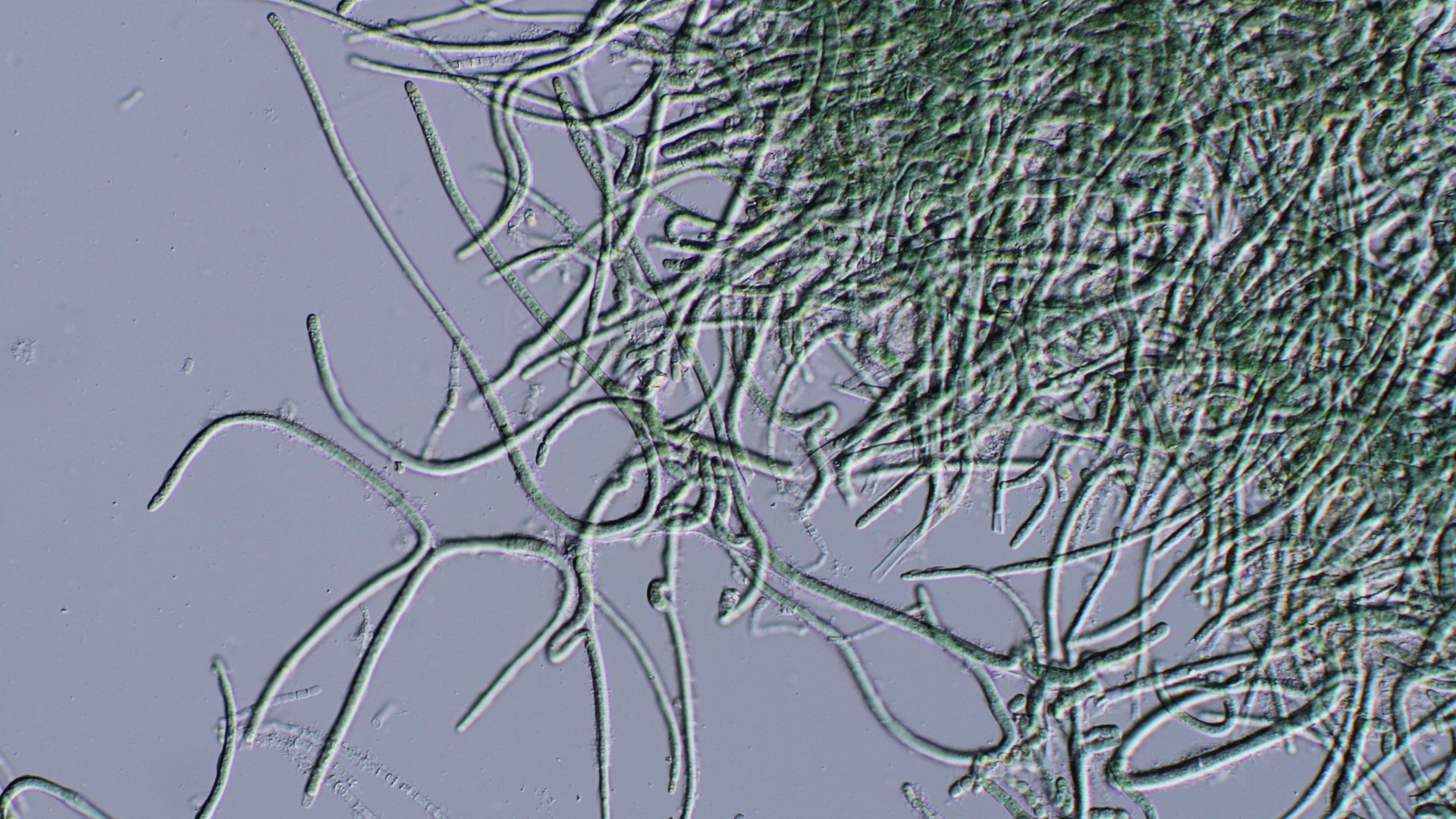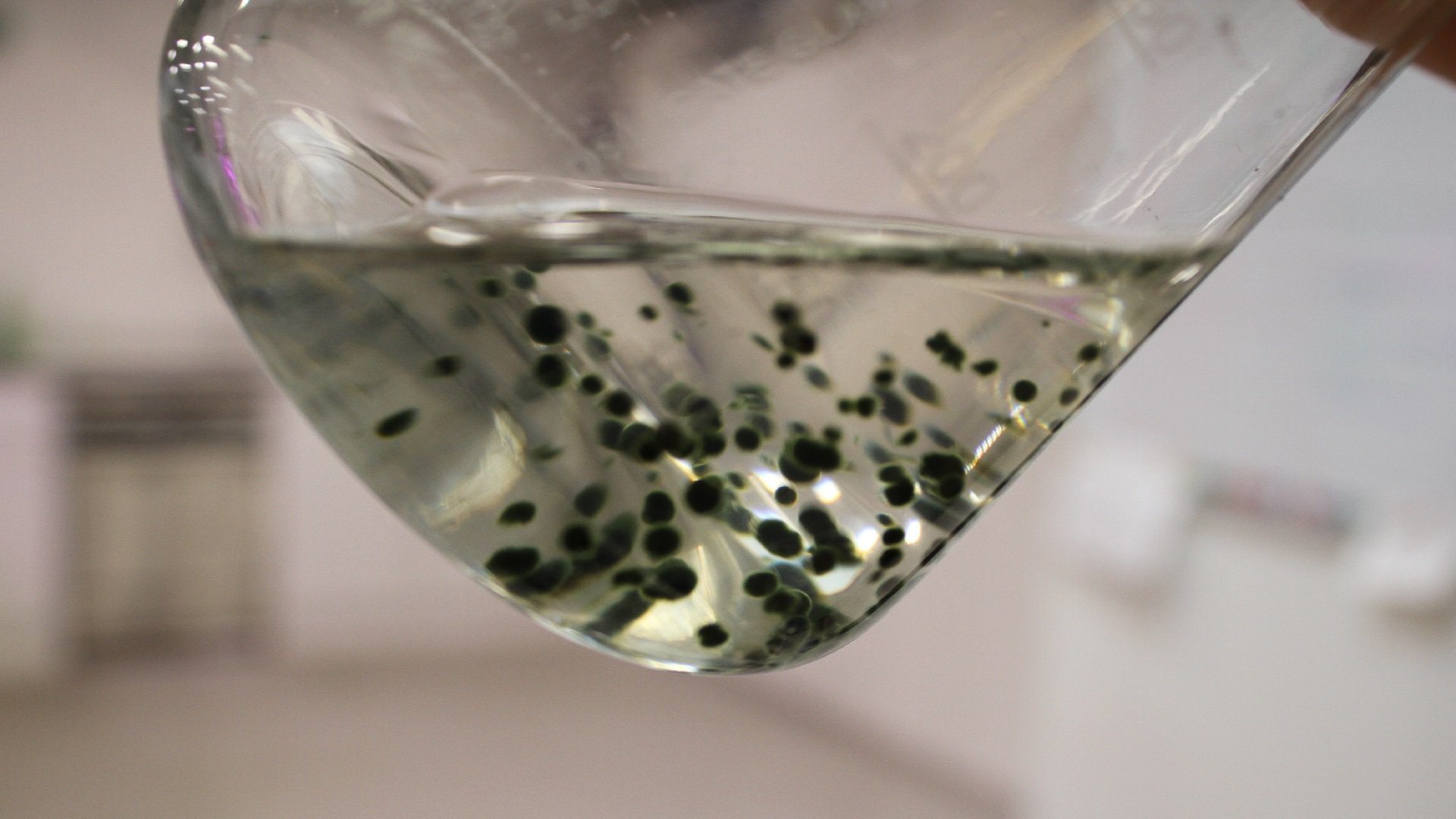Tolypothrix distorta is a cyanobacterium that makes its own energy in a process called photosynthesis. Water, light, and CO2 are transformed into sugar and oxygen. Furthermore, this blue-green alga only resides in clean fresh waters and is therefore an indication of water quality.
Tolypothrix distorta is a cyanobacterium that makes its own energy in a process called photosynthesis. Water, light, and CO2 are transformed into sugar and oxygen. Furthermore, this blue-green alga only resides in clean fresh waters and is therefore an indication of water quality.
Wooly matts
The cells of T. distorta are blue-green, long, and cylindrical. These are called filaments. The filaments are covered in a layer of mucus and make the cells stick together.
‘False’ filaments are formed when a special nitrogenbinding cell of the cyanobacterium – called a heterocyst – forms new branches. In these heterocysts, nitrogen gas is transformed into ammonium. The ‘false’ filaments are formed on only one side of the cell, and form thick hairy matts together. However, if water containing the cyanobacterium is stirred really well, little balls will form.

Algal blooms
In the summertime more and more blue algae are appearing in swimming waters. The warm water and abundance of nutrients help cyanobacteria multiply exponentially. A bright green layer on the water makes it unattractive for swimming, especially when it’s accompanied by a bad smell.
The biggest danger, however, is that cyanobacteria can produce toxins. Those toxins end up in the water when cyanobacteria die off in massive numbers due to a lack of nutrients, and the content of their cells is released. Accidentally swallowing – or even swimming in – water that contains cyanobacteria can cause all kinds of symptoms, from skin- and eye irritation to vomiting, headaches and diarrhea.

